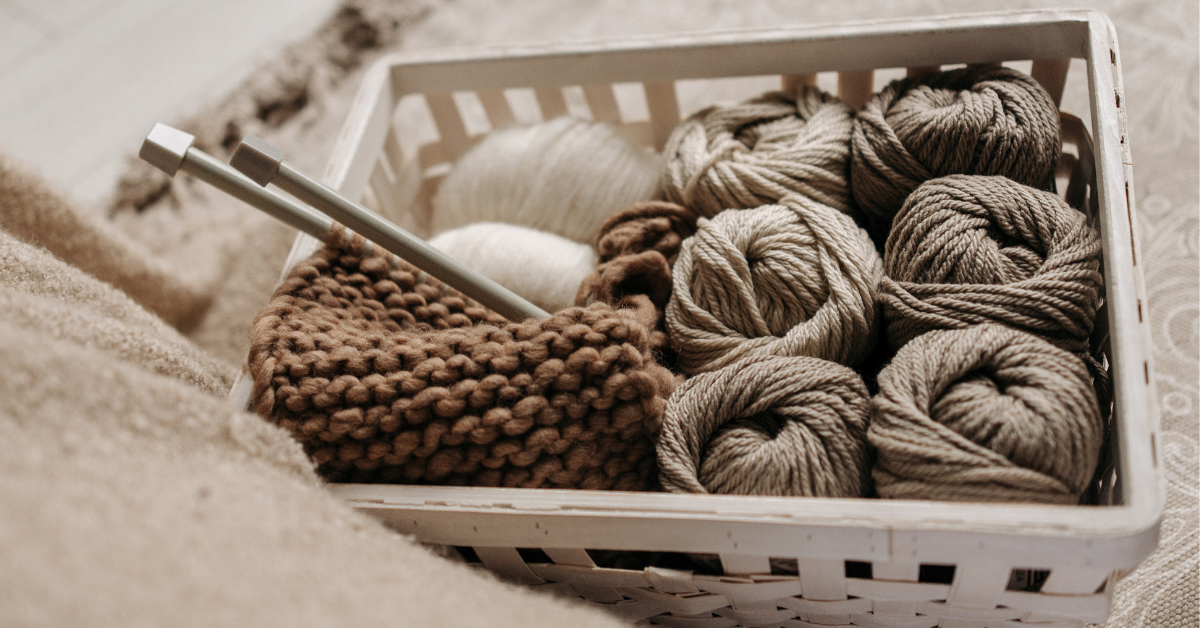Knitting is one of the most rewarding and relaxing crafts, but before you begin creating cozy scarves, hats, or sweaters, you need to understand the essential knitting materials. Having the right tools and supplies not only makes learning easier but also ensures your projects look neat and professional.
In this guide, we’ll explore all the must-have knitting materials for beginners and advanced knitters, from yarn and needles to accessories that make your knitting experience smoother.
1. Yarn: The Foundation of Knitting
Yarn is the most important of all knitting materials. It comes in a wide range of fibers, thicknesses, and textures.
- Fibers: Wool, cotton, acrylic, alpaca, bamboo, and blends
- Weights: Lace, fingering, sport, worsted, bulky, super bulky
- Colors & Textures: Solid, variegated, self-striping, smooth, fuzzy
Tips for beginners: Start with a smooth, medium-weight yarn (like worsted) in a light color. This makes it easier to see your stitches.
2. Knitting Needles
The second most essential knitting material is needles. They come in different shapes, sizes, and materials.
- Straight needles: Ideal for flat projects like scarves and blankets
- Circular needles: Great for knitting in the round (hats, sweaters) and large projects
- Double-pointed needles (DPNs): Used for small circular knitting like socks
- Materials: Bamboo, wood, plastic, and metal
Tip: Beginners usually find bamboo or wooden needles easier since they grip the yarn better.
3. Scissors
A small pair of sharp scissors is one of the simplest but most necessary knitting materials. You’ll use them to cut yarn when finishing projects or changing colors.
4. Tapestry Needle (Darning Needle)
A tapestry needle, also called a yarn needle, has a large eye and a blunt tip. It’s used for weaving in ends and sewing seams together in your knitting.
5. Stitch Markers
Stitch markers are little rings or clips placed on your needle to mark important points, like the beginning of a round or a pattern repeat. They help keep your knitting organized.
6. Measuring Tape
Since sizing is important in knitting, a flexible measuring tape is another must-have knitting material. It ensures that your projects match the pattern dimensions.
7. Row Counter
A row counter helps you keep track of how many rows or stitches you’ve worked. This is especially useful in patterns with repeated stitch sequences.
8. Stitch Holders
Stitch holders act like safety pins for your knitting. They keep stitches on hold when you need to set them aside and return later, such as when shaping necklines or sleeves.
9. Blocking Tools
Blocking is the process of shaping and finishing your knitted project. Common blocking knitting materials include:
- Blocking mats
- T-pins
- Spray bottles or steam irons
These help your finished item look neat and professional.
10. Project Bag
While not always listed as an essential knitting material, a project bag helps keep your yarn, needles, and accessories organized, especially if you knit on the go.
Optional but Useful Knitting Materials
- Cable needles (for knitting cables)
- Needle gauge (to measure needle sizes)
- Yarn swift & ball winder (for winding yarn into neat balls)
- Knitting journal (to record projects and patterns)
Final Thoughts
The world of knitting materials is vast, but you don’t need everything at once. Beginners can start with just yarn, needles, scissors, and a tapestry needle. As your skills grow, you can add more accessories like stitch markers, row counters, and blocking tools.
By investing in quality knitting materials, you’ll enjoy a smoother, more enjoyable knitting journey—and create beautiful handmade projects with confidence.

